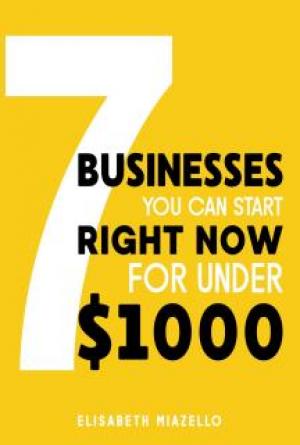15
Conclusion - Impatient Capital
Every time I see the words ‘we are here to help you’ or ‘we help grow businesses’ in promotional material for private equity investments, I bite my tongue because it is fundamentally misleading. The ultimate goal of the investor is not to grow the business, it is simply to earn a high return on the money invested. It is not to help grow the company, their strategy is almost always directed towards selling the business.
So if we are to be honest with ourselves as investors, then we should come out into the open and state that we are there to achieve great exit values for ourselves and the founders. There is nothing wrong with that as an objective and many entrepreneurs will be encouraged by working with investors who understand how to do it.
Selling out successfully is a great outcome for all parties. The investors achieve a good return on their money and are thus encouraged to do more investments. The entrepreneurial team is cashed up andis likely to go and do another one. If they make enough money, they are likely to become angel investors and help others do the same. The proceeds feed the tax man and thus help with nation building. Cashed up entrepreneurs spend money and donate to charities thus help their communities. Their employees often end up working for larger, more resilient companies and have better career prospects as a result.
I see no benefit in pushing a company to grow just for the sake of increased revenue and profits when, at the same time, it dramatically increases the risk of failure. I also see no reason to embark on any activities which does not directly contribute towards the ultimate investment objective – the exit.
For any angel or venture capital investment, the exit must inform the development strategy. We should work back from the ultimate objective to determine what we need to do to create a successful exit. Whatever investment we need should be directed towards creating the conditions for the exit and not for more product development, more market penetration or proving any part of the business concept which is not relevant to the buyer’s decision.
If it is simply about the exit, then the decision to invest should only be positive if a successful exit can be achieved. It matters little how great the invention is or how competent the management team if an exit cannot be readily achieved. Instead of an ‘A Team’ what you should be seeking is an ‘A Exit’ and a management team which is committed to it and capable of executing the strategy to achieve it. Instead of looking for the well rounded team that can build out a business concept and grow revenue and profit, we should seek out only those sets of skills needed to create the exit vehicle. It may be that this will have very little sales, marketing, distribution and service components. The key here is to work out what you need to do for a successful exit, not what it will take to grow the business.
Always remember that your investee does not have to successfully commercialize the innovation, the buyer will. Your job is simply to give the buyer the opportunity of taking it off your hands so that they can exploit it. The right business development strategy is to achieve the exit in such a way that you are well rewarded for creating the opportunity for the lucky buyer.
Too often Angels and VC investors leave the decision on how to exit too late. By then they have often created businesses which are difficult to sell. The buyer ends up having to unwind a lot of activities to get back to what they can properly exploit. This lack of focus results in excessive due diligence periods, bits of the business which the buyer does not really want and a longer period after the sale for the buyer to exploit the underlying assets and capabilities. All this leads to lower exit prices.
At the same time, undue attention to revenue and profit growth create the seeds of destruction in the investee firm. Too often investee firms get into trouble and have to be sold quickly to recover some of the investment money. Because little attention has been given to preparing the business for sale, it is usually too late to find the best buyers and so the sale proceeds are almost always suboptimal.
When the focus from the outset is the exit, the investment is only entered into if a probable exit can be anticipated. Since potential buyers are identified from the beginning, the business can be quickly offered for sale during most of its life. Even a business which has failed can still be an attractive acquisition for the right buyer. Remember,it is not the investee whichwill execute on exploiting the underlying strategic asset or capability, it is the buyer. It may matter little to the buyer what state the investee firm is in at the time of sale providing the buyer gets the assets or capabilities they want.
If the business is approached with an offer to purchase, the same logic applies. A business with an exit focus can be quickly put into a competitive bid because the work has already been done to setup that situation.
By taking a pragmatic focus on the exit from the outset, the angel and VC investors have a much higher chance of having a successful outcome. The investment periods can be expected to be shorter, the exit values much higher and the execution risk significantly lower.
What if you have to sell
Few businesses can guarantee that they will never get into trouble. Early stage companies frequently fail inthe first few years but even large corporations have been known to disappear. Look at the household names which failed – Enron, Ansett, Worldcom, HIH and so on. Of course, if you do get into serious trouble then just getting enough cash in the door to cover payroll can be a challenge. At the same time, staff will be deserting, suppliers will be hounding you for payment and you will be chasing customers. Not a great time to start thinking about selling.
The truth is that many companies end up on the auction block at the worst possible time, sometimes due to their own failures but often just because external events went against them. Whether it was a change in industry regulations requiring a major investment, a new aggressive competitor or a natural disaster, there are many events and circumstances which can derail a business. Planning for such an eventuality should consider the possibility that the business should be sold to recover as much of its value as possible.
However, it is very difficult to sell a business when the business itself is under pressure. The executives will be busy fighting fires and there will not be time to identify and court prospective buyers or time to engage the best advisors. Clearly, if you haven’t put the time in to develop a robust exit strategy for this set of circumstances, you will have left it too late to be anything but a fire sale.
Value in a business is related to its potential in the hands of the buyer, thus even a business heading for insolvency can be a great acquisition for a buyer who is not constrained by the situation facing the vendor. The key to a quick sale, which still gains a premium on sale even when the business is in trouble, is to have identified in advance those buyers who can develop the underlying potential in the business. The entrepreneur and the Investor should set out to identify a small group of such buyers, engineer a situation where those prospective buyers are informed of the potential in the business and then kept up-to-date with the progress of the business over time. The aim of the exit strategy should be to have each prospective buyer understand what they could gain from an acquisition.
Of course, in the unfortunate situation where the business has to be sold, it would be much better if the seller could quickly bring into a competitive bid a number of prospective buyers who were already apprised of the potential of an acquisition. The competitive bid process would then protect as much of the value in the business as possible. As part of the preparation for such an event, even if unlikely, the business needs to be put on a basis where the buyer can quickly undertake due diligence. This means that the business has to be fully prepared for such an investigation. If the seller has also ensured that the business is run effectively and efficiently and has few risks for the buyer, the due diligence process will conclude quickly and the buyer will be more willing to negotiate a deal.
What if you receive an offer?
Many entrepreneurs are quite surprised when a prospective buyer turns up at the door with an offer to buy. Even when they anticipate it might happen one day, the actual event is still surprising. Then of course, the entrepreneur and Investor must consider whether to entertain the offer or reject it without consideration. Few of us can resist at least finding out what is on the table and so it is more than likely that some discussion will be entered into. Sometimes this is ‘just in case’, that is, just in case it is a crazy high offer and you might want to seriously consider it.
If you are a high growth potential business at an early stage of proving your business model and you are hoping for a strategic buyer, you might have some difficulty working out what a reasonable offer might be. Even so, there will clearly be a price where you will move forward with the negotiation. But how do you know you have the highest price you could achieve at that moment in time?
Most acquirers are not in the business of being generous and they will pitch their price at a point which will just get your interest and secure the deal. If they don’t need to offer more to secure the deal, why should they? Even if you thought your business had greater potential, you still might be willing to settle for a bird in the hand. Once you have decided that the offer price is at a point where you will sell the business, the only way you can be sure of getting the best price is to put your business into a competitive bid.
When you have an offer, it is unlikely that the prospective buyer will hang around while you start the process of working out who else might be interested and go through the exercise of making contact and educating other prospective buyers. Most offers have relatively short offer periods– basically take it or leave it. However, if you like the price, the only way you can move it to a competitive bid is to have the other prospective buyers waiting in the wings. That is, you will have set out sometime in the past to proactively identify and make contact with a group of prospective buyers with the intention of setting up a future competitive bid. Whether you trigger off such a bid or it is activated by an offer, you need to be prepared for such an event.
An offer often comes with a condition of exclusive dealing, however, this is normally done so that the prospective buyer doesn’t waste their due diligence time and costs. If the business is already prepared for due diligence and the prospective buyers already understand the potential in the business, the vendor can hold off on due diligence until more prospective buyers are in the frame. Then only the highest bidders will be invited to undertake a limited due diligence to arrive at a preferred buyer.
What is very clear is that, if you want the best returns under a wide set of circumstances, preparation for sale is the key. If you are dealing with strategic value, then by following the process outlined in this book, you will have the best chance of making a good return, even in poor circumstances. What you don’t want to do is depend on luck to get a good return on your investment. Only with preparation can you insure that you can get a reasonable return and, then of course, because you are prepared, you can always make the lucky breaks work for you.
The Beginning is about the End
The greatest influence on the exit returns to the Investor is the initial decision to invest. If you get into the wrong deals, it is highly unlikely that it will end well. However, if you choose the right investments, the probability that you will come out with a good return will increase significantly.
For too long the strategic exit has been seen as the exception – all luck and timing. But this is certainly not the case. There are numerous examples of strategic deals which occurred because the entrepreneur and the investors set out to be acquired by a strategic partner. Biotech deals are always strategic since it is certainly the case that the R&D teams never have the intention of selling and marketing their own inventions.
What has been missing is a well documented process to show how a strategic deal is executed. If you accept that the process in this book works, the investor then only needs to invest in ventures which have a probable strategic exit as the harvesting method. This book sets out both a model for identifying strategic investments as well as a process for achieving a strategic exit.
Basically, you should not enter into any investment where the outcome is not a strategic exit. While there will be exceptional situations where an IPO is probable, few ventures have the attributes to drive such an exit. Much better to set out with the objective of sourcing strategic value ventures where the probability of a strategic exit is high, the amount of investment is reasonable as it only funds exit activities and not business growth and, the tasks needed to set up the strategic exit are well within the capability of the Investor and the venture management team.
The overall investment results will be considerably improved over traditional Angel and VC investment returns.







